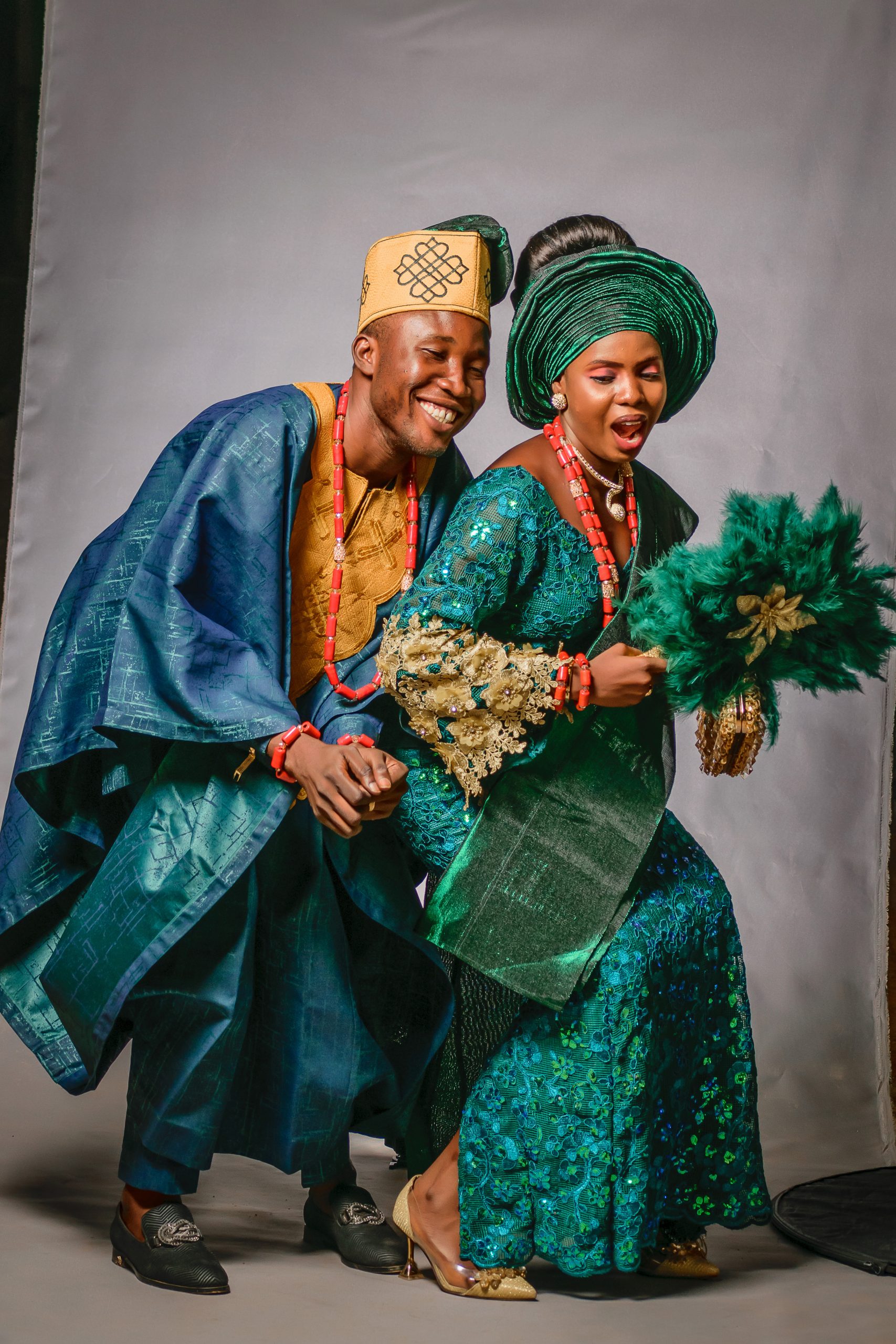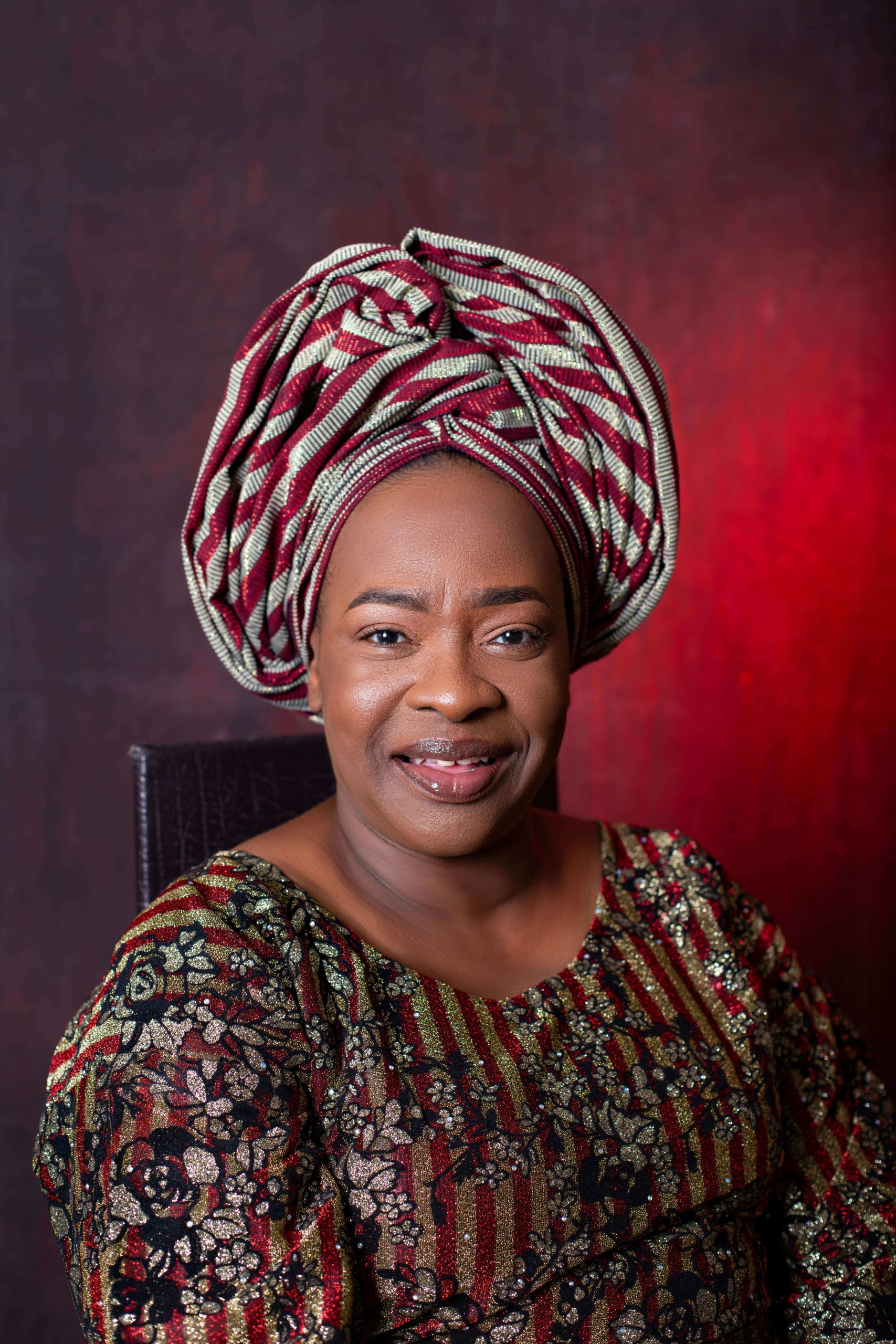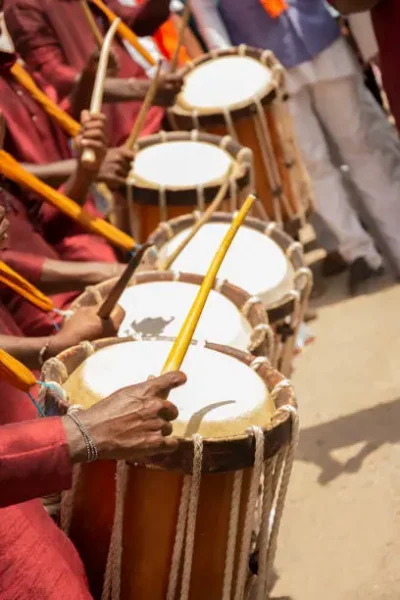DiscoverYoruba.com is your one-stop for embracing Yoruba culture, entertainment, and history unfolding.
Yoruba traditional clothes, when done well, always make a statement! In the wonderful world of Yoruba fashion, culture blends effortlessly with beauty, resulting in amazing colours, textures, and designs. Yoruba fashion is a celebration of our identity, history, and some serious tailoring creativity and skills. In this article, we will take a journey through the world of Yoruba fashion, going into the details, symbolic meaning, and elegance that set our fashion style apart from the crowd.

There’s a sense of pride that comes with knowing and dressing in the outfits of your culture in this modern world of Western dressing adoption. Little storytime:
I can remember a day when I was much younger, and my mom dressed me in full Yoruba traditional attire. I was throwing a fit about how I wanted to wear this pink princess dress my dad got me, and she wasn’t having any of it that day. After she got me all dressed up, she stood me in front of the mirror and said to me, “Look at yourself; don’t you like what you see? Omo daadaa”. And then she turned it into a fashion show and made me walk the runway for her and my dad. I still smile about the applause I got from my “audience.”. That day, something changed in me.
Table of Contents
Yoruba Traditional Clothes for Men and Women
Women Traditional Wears
Yoruba women’s traditional dress is the “buba” (blouse), “iro” (wrapper), “ipele” (shawl), and “gele” (headgear). The “buba” is a loose-fitting shirt with elaborate motifs, while the “iro“, in Yoruba language, is a wrapper knotted around the waist that comes in a variety of materials and patterns. The “ipele” is a shawl that is placed around the waist. Gele, the headgear, is artfully knotted into designs that beautifully complement the attire. It may also include the “iborun”, a shawl that’s laced around the shoulders. The aso-oke also has these elements, but was made from handwoven cotton and was mainly worn for special occasions.
Other outfits are:
Oleku: A variation of iro ati buba that has a shorter wrapper.
Komole: A long gown made as a variation of iro ati buba with different necklines, sleeves, and embroidery.
Aso Ebi: Matching outfits worn by friends and family of a bride at weddings.
Men Traditional Wears
Yoruba men wear the “agbada,” a flowing, wide-sleeved robe embellished with embroidery worn over the “dansiki” or “buba” (loose shirts) and “sokoto” (trousers) with a “fila” (cap). The “fila” comes in a variety of styles to suit the wearer’s taste and occasion.
These traditional attires are worn on regular days or made specially for ceremonies, festivals, weddings, and other important cultural occasions, highlighting the Yoruba people’s rich cultural legacy.

Significance of Colours and Patterns in Yoruba Clothing
Yoruba dress colours and patterns have cultural, social, and spiritual importance.
Some colours include:
1. White (funfun) symbolises cleanliness, spirituality, and joy. It is commonly worn at festivities and celebratory events. Associated with Olodumare and Obatala, among other deities.
2. Black (dudu) represents sadness and mourning. It is associated with Esu and Ogun.
3. Red (pupa) represents anger, blood, and wrath. It also represents beauty and prosperity. It is typically worn during rituals and rites of passage to provide a cooling presence. It is associated with Sango.
Patterns, particularly in textiles like adire and aso-oke, frequently communicate particular messages. Geometric forms, animals, and symbols are utilised to convey cultural stories, beliefs, and even personal experiences.
Influence of Yoruba Fashion on Contemporary Designs
Yoruba fashion has had a tremendous impact on current design, both in Nigeria and across the globe. Some important characteristics of this impact are:
1. Cultural Fusion: Yoruba fashion’s brilliant colours and elaborate embroidery have prompted designers to explore cultural fusion. Traditional Yoruba components are frequently mixed with Western styles, resulting in new fashion statements. Here are some features of this fashion fusion:
- Aso-Oke in Modern Silhouettes: The traditional Yoruba handwoven cloth has made its way into Western design. Designers blend Aso-Oke into contemporary designs like dresses, jackets, and accessories, resulting in a combination of traditional Nigerian workmanship with Western design aesthetics.
- Ankara Designs in Global Fashion: Ankara textiles, famous for their colourful and bold designs, have become a global fashion sensation. Western designers use Ankara designs in their collections, highlighting the colours and patterns of African fabrics in a wide range of apparel items such as dresses, skirts, and even suits.
- Gele-inspired Headwraps: The skill of gele tying has influenced Western design, and headwraps are now a fashionable accessory. Geometric shapes and elaborate designs inspired by Yoruba gele tying are blended into Western fashion, providing a cultural twist.
- Beaded Accessories and Jewelry: Traditional Yoruba beading has influenced Western jewellery designers. Beaded accessories, necklaces, and bracelets inspired by Yoruba cultural aesthetics are now popular in Western fashion, resulting in a harmonic fusion of styles.
The cultural fusion of Yoruba forms in Western design not only highlights the diversity of African heritage, but it also promotes a more inclusive and diversified global fashion scene.
2. Fabric Options: Traditional Yoruba textiles such as Aso-Oke, Adire, and Ankara have garnered international recognition. Contemporary designers combine these textiles into modern shapes, combining traditional and cosmopolitan trends. They demonstrate Yoruba fashion’s versatility in contemporary design, where traditional fabrics play an important part in developing new trends and establishing a distinct cultural identity within the global fashion world
3. Geometric Patterns: The geometric patterns prevalent in Yoruba attire, particularly Aso-Oke, have influenced modern designers to incorporate geometric motifs into their work. This influence may be found throughout a variety of fashion brands and collections.
4. Headwraps and Accessories: The practice of gele tying has impacted the usage of headwraps in modern fashion. Designers incorporate complex headpiece designs into their collections, bringing ethnic depth to various fashion trends.

5. Innovative Adire Techniques: The tie-dye techniques of Adire textiles have encouraged modern designers to explore tie-dye in a variety of ways. This historic craft has made its way into modern apparel, creating a link between tradition and modernity.
Yoruba fashion continues to be a source of inspiration for designers, encouraging a dynamic interchange between traditional aesthetics and current trends in the worldwide fashion industry.
Accessories and Adornments in Yoruba Fashion
Yoruba fashion’s beauty, art, and cultural importance are enhanced significantly by its accessories and adornments. Here are some significant features:
1. Beaded Jewelry: Beads are frequently used in Yoruba fashion. Nicely beaded necklaces, bracelets, and anklets are worn to represent numerous things, such as social position and spirituality. The workmanship of beaded jewellery shows the Yoruba people’s rich cultural legacy.
2. Headgear (Gele): Gele tying is an art form, and gele, or headgear, is an essential Yoruba fashion element. Gele designs are chosen according to the occasion, and the intricate tying techniques lend refinement to traditional clothes.
3. Needlework and Appliqué: Traditional Yoruba attire frequently incorporates complex needlework and appliqué work. These decorations improve the appearance of the garment by adding a layer of workmanship and cultural meaning.
4. Cowries and Shells: Cowries and shells are sometimes used in accessories, including belts, headpieces, and garment decorations. They have cultural and spiritual importance and are said to offer good luck and protection.
5. Walking Sticks and Canes: Ornate walking sticks or canes are popular accessories for ceremonial gatherings, especially among men. These items frequently include creative carvings and serve both functional and aesthetic purposes.
6. Hand Fans: Elaborate hand fans, sometimes made of colourful cloth and embellished with beads or embroidery, are used as ornaments during ceremonies and festivities. They add a touch of sophistication to traditional clothes.
7. Embellished Footwear: Shoes and sandals may be embellished with beads or embroidery to match the rest of the outfit. This attention to detail extends to footwear, which completes the traditional Yoruba appearance.
Conclusion
At Discover Yoruba, we never let a chance to be cultural and represent our roots pass by. We seize them and make a statement. Do you?
We hope you’ve fallen in love with our traditional wear today, like we rightly have.
Which traditional outfit is your favourite? We’d love to know!
References:
- A Close-Up on Aso-oke of the Yoruba: Google Arts and Culture
- Iro and Buba: A National Treasure: Leadership News
- Colour in Yoruba Dress Culture: Academic Hosting and Events Management Solutions
- Yoruba Women’s Clothing: Wikipedia












